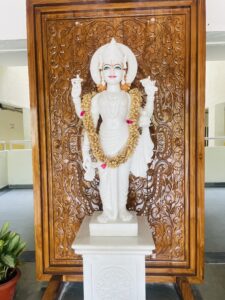Ayurvedic Consultation
The name Ayurveda is made up of two words, ‘ayur’ and ‘veda’ referring to life and knowledge respectively. Joined together they mean the science of life and longevity. Although it is considered a science of medicine, it is a different science. The basic principle of this ancient Indian medical system describes that treatment is not merely curing of disease.
Being extra ordinary from the modern medical science, it has a holistic approach towards diseases as
Ayurveda deals with the mental, spiritual and physical body complex with social aspect of human beings each impinging on others.
This theory has been a part of history for the last 5000 years.
The knowledge of Ayurveda was originally passed on from teacher/guru to disciple in the form of one to one lessons without the use of any written books. Later on, the knowledge was codified in the form of books (around
1000BC). Reference of this science can also be seen in the Vedas, the ancient Indian text of knowledge. Around 1000 BC, the knowledge of
Ayurveda was comprehensively documented in Charak Samhita and
Sushruta Samhita. According to Ayurveda, health is considered a pre- requisite for achieving the goals of life, dharams, artha, kama and moksha (salvation).
The philosophy of Ayurveda is based on the theory of Panchmahabhutas(five great-element theory) of which all the objects of living bodies arecomposed of. The combination of these five elements are represented in the form of Tridosha e.g., Vata (Ether+ Air), Pitta (Fire) and Kaph(Water + Earth). These three ‘Doshas’ are physiological entities in living beings. These are also known as three humours. The mental and spiritual attributes are described as Satva, Rajas and Tamas. The various permutations and combinations of Satva, Rajas and Tamas constitute human temperament and personality. Ayurveda considers the human being as a combination of three doshas, five elements, seven body tissues (Sapta-dhatu), five senses (Panch-indriyas) with sensory and motor functions, mind (Manas), intellect (Budhi) and Soul (Atman).
The doctrine of Ayurveda aims to keep these structural and functional entities in a functional state of equilibrium which signifies good health.
Any imbalance due to internal or external factors causes disease and restoring the equilibrium through various techniques, procedures, regimen, diet and medicine constitute the treatment. In Ayurveda, diagnosis include questioning and eight examinations, viz., Pulse,
Urine, Faces, Tongue, Eyes, Visual / sensual examinations and
inference.
Ayurveda describes in detail the principles of preservation and promotion of health as well as prevention and cure of diseases. It treats man as a whole.
The science of life and longevity guides us to maintain the balance in these three biological forces, as the imbalance in these, according to the Ayurveda is the cause of all the ailments, which mankind is suffering from.
Ayurveda considers the human being as a microcosm, a replica of macrocosm (Universe). The treatment in Ayurveda system is individualized. While prescribing medicines to a person, one has to consider various factors like the condition of body and mind, temperament, sex, age, metabolic fire, work-rest pattern, sleep pattern and diet.
Treatment in Ayurveda has two components; (a) preventive and (b) curative. Preventive aspect of Ayurveda is called
Syasth-Vritt and includes personal hygiene, regular daily routine, appropriate social behaviour and Rasayana Sevana, i.e. use of rejuvenative materials / food and drugs. The curative treatment consists of use of drugs, specific diet and life style.
Specialties of Ayurveda:Specialties of Ayurveda:Specialties of Ayurveda:Specialties of Ayurveda:—-
During the samhita period (1000BC) Ayurveda developed into eight branches of specialties which was a reason for it being called Ashtang Ayurveda. These are:-
(1) Kayachikitsa (Internal Medicine)
(2) Kaumar Bharitya (Pediatrics)
(3) Graha Chikitsa (Psychiatry)
(4) Shalkya (Eye & ENT)
(5) Shalya Tantra (Surgery)
(6) Visha-Tantra (Toxicology)
(7) Rasayana (Geriatrics)
(8) Vajikarana (Science of Virility)
During the last 50 years of development in the teaching and training in Ayurveda, it has now developed sixteen specialties.
These are:-
(1) Ayurveda Sidhanta (Fundamental Principals of Ayurveda)
(2) Ayurveda Samhita
(3) Rachna Sharira (Anatomy)
(4) Kriya Sharira (Physiology)
(5) Dravya Guna Vigian (Materia Medica & Pharmacology)
(6) Ras-Shastra
(7) Bhaishajya Kalpana ((Pharmaceuticals)
(8) Kaumar Bharitya (Pediatrics)
(9) Prasuti-Tantra (Obstetrics & Gynaecology)
(10) Swasth-Vritta (Social & Preventive Medicine)
(11) Kayachikitsa (Internal Medicine)
(12) Rog Nidan (Pathology)
(13) Shalya Tantra (Surgery)
(14) Shalkya Tantra (Eye & ENT)
(15) Mano-Rog (Psychiatry)
(16) Panchakarma











